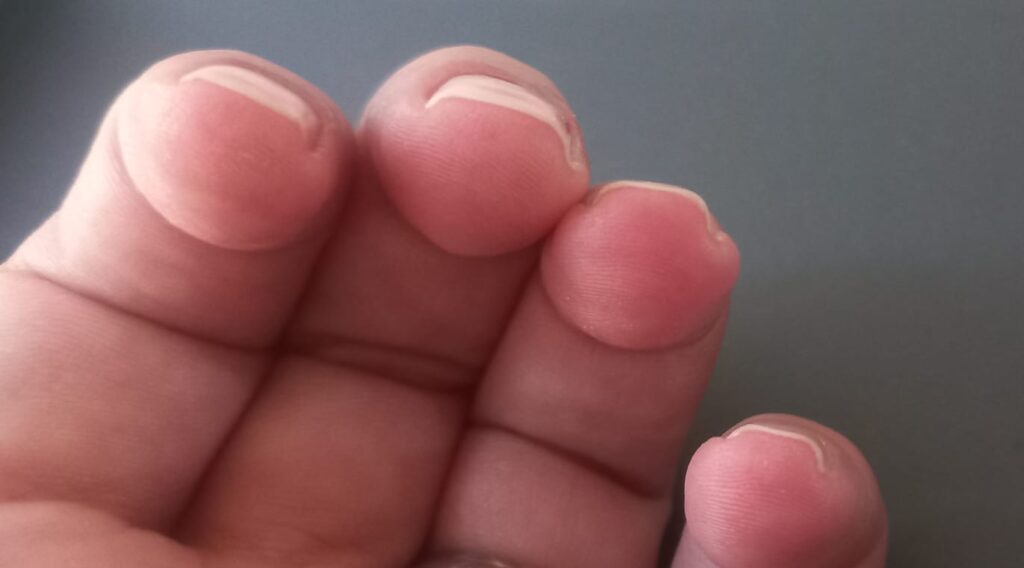Navigating Nail Transformations
Nail health is a reflection of our overall well-being, but sometimes, even without apparent reason, our nails can undergo unexpected changes. Among these is the development of what some may notice as staple-like appearances, where nails, typically curved, begin to grow out squared.
We explore the unique condition known as “staple nails,” and its possible causes, and suggest ways to manage and potentially improve this nail phenomenon.
The Phenomenon of Staple Nails

This condition is characterised by a nail plate with squared front that looks very much like an office staple. This change can start subtly with one nail and others can be affected too or not. It’s a noticeable shift that can leave many puzzled about their nail health.
Underlying Causes for Staple Nails
There are several factors that might contribute to the development of staple nails, and understanding these can be key to managing the condition.
Psoriasis and Nail Changes
Psoriasis is a common skin condition that can also affect the nails or the nail bed, leading to various changes, including the squaring of the nail plate. This occurs as the nail bed swells, putting the nail plate under extreme pressure and causing it to deform.
Compromised Blood Supply
Another possible cause for staple nails is a damaged blood supply to the nail matrix. When the blood supply is compromised, it may result in weaker nail plate cells. These weakened cells can cause the nail plate to buckle, creating squared corners instead of the usual rounded edges.
Aging and Nail Cell Formation
As we age, the formation of nail plate cells can alter, leading to weaker cells that are more prone to buckling under pressure. This change contributes significantly to the appearance of staple nails, highlighting the impact of aging on nail health.
Practical Advice for Staple Nails
To manage this condition effectively, keeping the nails flexible and well-moisturised is crucial. Regular use of a high-quality nail and skin oil can help maintain nail flexibility and prevent the nail plate from fracturing, especially at the free edges. For those seeking an alternative to oils, a rinse solution containing moisturising components like allantoin and urea can be used several times a day to help retain moisture and prevent dryness, which can exacerbate the problem.
It’s also important to choose the right type of artificial nail products if you use them. Opt for flexible, soak-off products to minimize the risk of further damaging the nail plate during removal.
Final Thoughts: Managing Nail Health Amidst Changes
Staple nails may be an unusual and unexpected nail condition, but with proper care and attention to nail health, it is possible to manage this issue. Keeping the nails short, flexible, and moisturised, and avoiding harsh treatments can help mitigate the effects of staple nails.
As always, if nail problems persist, consulting a healthcare or dermatological expert is recommended to rule out any underlying conditions that may need specific treatment.


